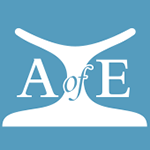19th-Century Crowdfunding to 21st-Century typology
What have London’s Kew Gardens, Japan’s Kyoto University and the USA’s Cedar Rapids Masonic Lodge Iowa got in common? They all care for Egyptian objects excavated by British-led teams in the late 19th and early 20th century, as do some 280 other institutions around the world. This dispersal of archaeological material is something we will be tackling over the next two years in the AHRC-funded ‘Artefacts of Excavation’ project.
This vast spread of things was a result of what might be the world's first successful use of crowd-funding. British excavations in Egypt never received state funding, unlike France for example. Instead, early archaeologists had to find sponsors and they often did this through subscriptions to organisations like the Egypt Exploration Fund (who kickstarted it all) or the British School of Archaeology in Egypt. In return, public and scholarly institutions around the UK, throughout Europe and across the globe, took a share of the discoveries after authorities' in Egypt had made their selection.
There is enormous potential in these dispersed collections to tell all sorts of stories not only about ancient Egyptian life and death, but also to regale histories of the people who became associated with finding and collecting Egyptian things. Yet this promised research potential faces a logistical problem: many of these objects were never published before being sent around the world and the related contextual documentation may be thousands of miles away. For people looking to reconnect objects to their context or for the custodians trying to document and use these objects it can be frustrating and time consuming to find out something as simple as what site an object is from.
Over the next few months our AHRC project team will be using this website to try and address these issues and reduce the number of wild goose chases in museum basements. We will be publishing archival material from the Petrie Museum of Egyptian Archaeology and the Egypt Exploration Society, which details the distribution of excavated finds. We will also be providing explanations to help non-specialists navigate through this information and reconnect objects to their histories. By sharing resources in this way we aim to allow people to make their own discoveries in museum displays, storage facilities and archives.
As we continue to sort, scan and transcribe material for the website (and wrestle with technical snags underneath!), we will be using Twitter, Pininterest, and this blog to highlight new finds and stories as they emerge from the archive. In the next few months pages detailing specific excavations at sites in Egypt, along with information on which institutions (as far as we know) received objects will start to populate the website.
We also welcome guest contributions too, so please do get in touch if you would like to be involved or have any queries or suggestions. We will also be hosting events and workshops that are detailed on our events page. Watch this space.

